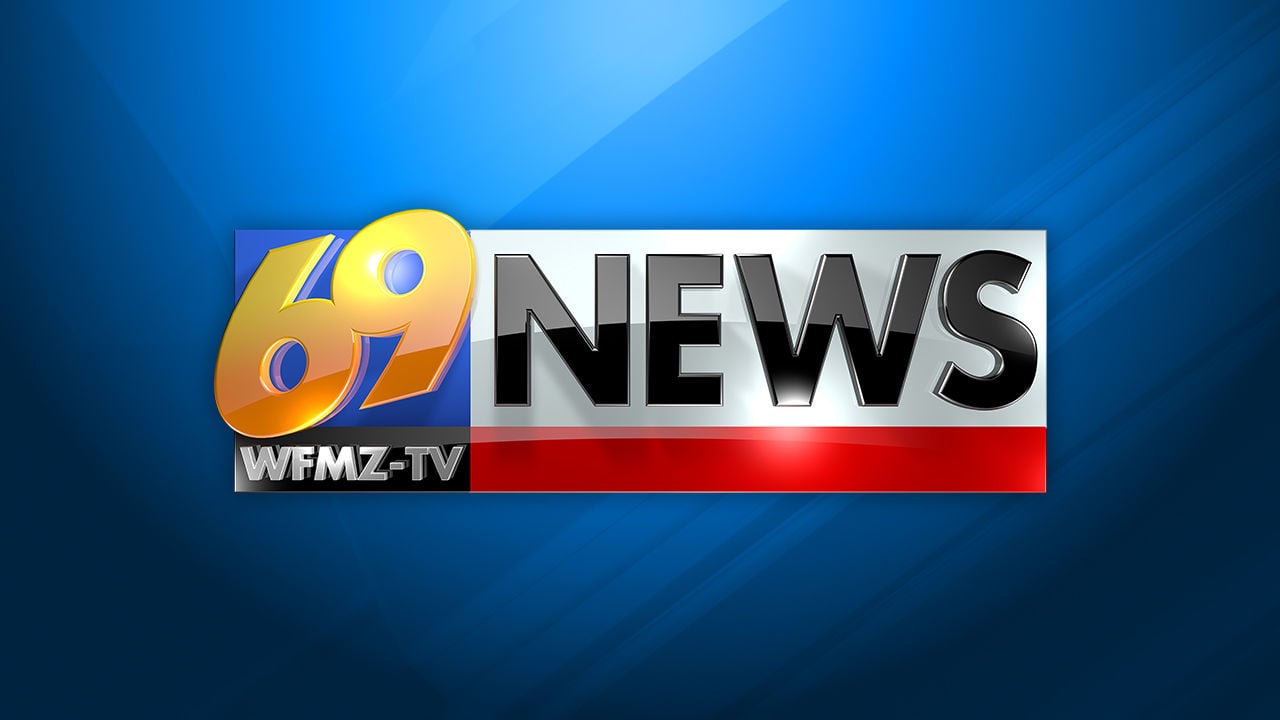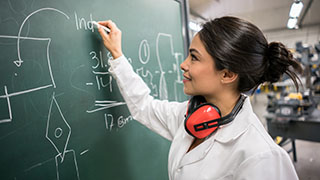Ann Arbor parent Beverly Davidson doesn’t want to come across as an “angry monster” or worse yet, an armchair quarterback.
She has two children who had participated in sports at Ann Arbor Public Schools prior to the COVID-19 pandemic but made the decision to hold them back from playing this year.
It’s one of many Michigan school districts that have held off on in-person instruction to stop the spread of the virus but green-lighted student participation in athletics. It’s a prioritization some worry keeps students behind in the classroom even as sports surge forward with similar safety risks.
Davidson sees it as inconsistent.
“I think it sends a conflicting message about safety: It’s not safe enough to go to school, but it’s safe to be in an auditorium playing contact sports,” said Davidson, a social worker who has lived in Ann Arbor for 20 years.
“Not every student in the district plays sports. While I do believe that sports are very important for a child’s social-emotional health, to build resilience and character, there are lots of other extracurricular activities that do the same thing.”
Count it, too, among the long list of concerns on Gov. Gretchen Whitmer’s mind. Her executive orders made it possible for school districts to decide on both in-person instruction and in-person athletics, even if those decisions conflicted.
Whitmer said with more than 800 school districts in Michigan, it couldn’t be a one-size-fits-all approach.
“We’ve got to, you know, empower our districts to make the best decisions for their students and student athletes,” Whitmer told reporters.
“But a school’s primary purpose is education of children. And that’s got to take precedence over, I would say, everything else. As a parent of a public school child that’s what I hope and would want for my child and for all kids in Michigan,” Whitmer said.
Pressure from parents
As schools across the state took the temperature of parents about returning kids to school in person, they got mixed results. But when the Michigan High School Athletic Association announced it would allow districts to run fall athletics, the response was clear: people wanted high school football.
They told school leaders. They told their friends and neighbors on social media. And before the governor had made the decision that allowed MHSAA to authorize sports, they rallied at the Capitol urging her to do so.
For Grand Rapids Public Schools, there was enough evidence to support the decision to resume fall sports after the district surveyed parents and had evidence of following health and safety protocols through summer sports practices, District Spokesman John Helmholdt said.
Of the more than 1,000 parents who were surveyed about whether the district should allow sports to take place, more than 70% supported the decision, Helmholdt said. That support combined with the fact that every other school in the conference was prepared to play sports in the fall showed that sports were ready to continue.
“Our student athletes successfully practiced and conditioned throughout the summer with all the health and safety protocols in place,” he said. “So, while schools were closed and summer school was virtual, athletics was continuing.”
Across the state, parents were saying the same thing.
“I think you saw, pretty much, strong support from parents and other groups to do that,” Macomb Intermediate School District Superintendent Michael DeVault said at a virtual press conference Thursday.
In the end, only a small handful of districts chose not to offer fall sports.
Determining the right thing to do
When Lansing School District decided it would start the year with remote learning, it also made the decision to postpone all fall extracurricular activities, including all sports, band, and cheerleading until at least November.
The decision wasn’t easy for Superintendent Sam Sinicropi, a self-professed sports fan who understood how much participating in sports means to student mental health and wellbeing. But health and safety drove the final decision.
“I’m a sports guy,” Sinicropi said. “I participated, my kids participated, I love watching sports. It was a tough decision. In the end, it was my feeling that if we were not offering face-to-face (learning), we weren’t offering extracurriculars.”
The decision hasn’t been popular with many parents and students, Sinicropi said, noting the district plans to revisit its plans for in-person instruction on Nov. 6.
Despite some opposition, however, he believes the same factors that drove the district’s initial decision – the health and safety of students and the district – will continue to influence future plans for athletics.
“Does anybody know what the right thing to do is right now? I don’t think anybody does, because we haven’t faced this before,” Sinicropi said.
Kalamazoo took some of the same things into consideration but came out on the other side.
Kalamazoo Public Schools Director of Secondary Education Johnny Edwards said the district considered the governor’s executive orders as its top priority in decisions for both athletics and academics, followed by the standards released by the MHSAA.
School leaders decided to allow high school athletics. But the district still needs more time to formulate and implement a plan for the return of in-person classes. Allowing a much smaller group of students to participate in sports is easier to develop a set of protocols for, Edwards said.
“There were a lot more unanswered questions on the academic end to offer some version of face-to-face instruction and less questions on the athletic end,” Edwards said. “When it came to athletics, while there is contact, there are obviously less students involved.”
In Ann Arbor, Superintendent Jeanice Swift said the decision to re-start fall sports was hard, but not as hard as the logistics of resuming in-person learning.
“It absolutely is a difficult and challenging decision, and yet, having our students participating in athletics is not the same order of risk as having our students engaged inside a classroom for a full day of school,” Swift said.
Schools that did restart athletics took precautions. In Ann Arbor Public Schools, spectators aren’t allowed despite the MHSAA’s plan to allow two spectators per student-athlete. In Macomb County, districts have restricted concession stands and bands. In Kalamazoo, event capacity is limited to 25%.
Still, school leaders know there is the potential for problems. Oakland Schools Superintendent Wanda Cook-Robinson said a recent outbreak resulted in 25 members of an athletic team in the county being quarantined.
Initially, she said, schools thought it was safe for student athletes to play outdoors. Now, she’s seeing other reports indicating the close contact is risky, even outside.
“We don’t have good data. We don’t have good scientific data to rely on and that’s been a major, major issue,” Cook-Robinson said.
Cook-Robinson has a PhD, not an MD. She said many school leaders are similarly situated, trying to make the best decisions they can with the information when “this is a health crisis, not an education crisis.”
Schools eye learning loss
While students may be making gains on the field or in the gym, educators are looking at a stark reality in the virtual classroom. Students are falling behind.
It’s hard to quantify exactly what’s happened as students shuffled out of school in March for what they thought would last a few weeks. As weeks turned into months and schools scrambled to move learning online, annual assessments that happen in the spring were skipped. Then, summer came — a period where students typically experience learning loss even without a pandemic.
Some have returned to classrooms or partially returned to classrooms, but others are online. Some have limited internet access, special needs or housing circumstances that make learning from home difficult.
Cook-Robinson said it’s going to take support and funding from the state, long-term, to help kids catch up.
“Every educator in Michigan right now is really focusing on how we can help students recover from this unprecedented disruption to their education. But the recovery is not going to be quick,” she said.
As the coronavirus crisis continues, parents raise questions
Parent Kathy Bishop says she felt Ann Arbor Public Schools’ decision to offer fall sports contradicted its more careful approach to returning children to the classroom.
Bishop initially was on board with the district’s decision to begin the year with remote learning but has since questioned why it has not developed a timeline for a return to in-person instruction over the past two months.
At the same time, the district showed little hesitation, Bishop said, in announcing fall sports were back on less than a week after the Michigan High School Athletics Association reinstated football across the state and gave the green light for other sports teams to begin competing.
“The part that’s really frustrating for me is that they’re higher risk and they’re allowing them to go forward, but they’re not allowing people to learn in-person. It just seems like learning should be prioritized over that,” said Bishop, whose two children are in elementary school and plan to compete in athletics when they are older.
“Why are we so special when it comes to putting kids in the classrooms, but we weren’t special at all when it came to sports? We just went along with everybody else.”
But for other parents, sports have been at least one normal thing for their kids. Amy Wilczynski has a seventh-grader and 10th-grader in Chippewa Valley Schools, where instruction is virtual-only.
Her seventh-grader, Zack, is very social and misses his friends. Being able to head to football practice after a long day in front of the computer has helped.
“I think that’s sort of the motivation that he needs to keep him going with this,” Wilczynski said.
For now, school leaders and communities are sitting with the contradiction.
DeVault, of the Macomb Intermediate School District, said he knows it can seem hypocritical from the outside looking in. But deciding to play high school sports is one more uncertainty in an uncertain time.
“In a perfect world, we wouldn’t have it. But in a perfect world colleges wouldn’t be playing possibly, bowling alleys wouldn’t be open, all those kinds of things, I think. So, it’s a matter of choice,” DeVault said.
To help you navigate this complicated fall, we’re pleased to offer you a simpler way to get all of your education news: Our new Michigan Schools: Education in the COVID Era newsletter delivered right to your inbox. To receive this newsletter, simply click here to sign up.
READ MORE:
How the decision was made to bring back high school football in Michigan
Gov. Whitmer: Football players, other athletes must mask up, even while competing
Get ready for one of the craziest high school football seasons in Michigan history





More Stories
Lawmakers recommend COVID relief for snowmobile associations; school funding gap still looms
Questions linger one month into Saskatchewan’s back-to-school plan
NH school-funding commission wrestles with ‘first-last dollar’ rule